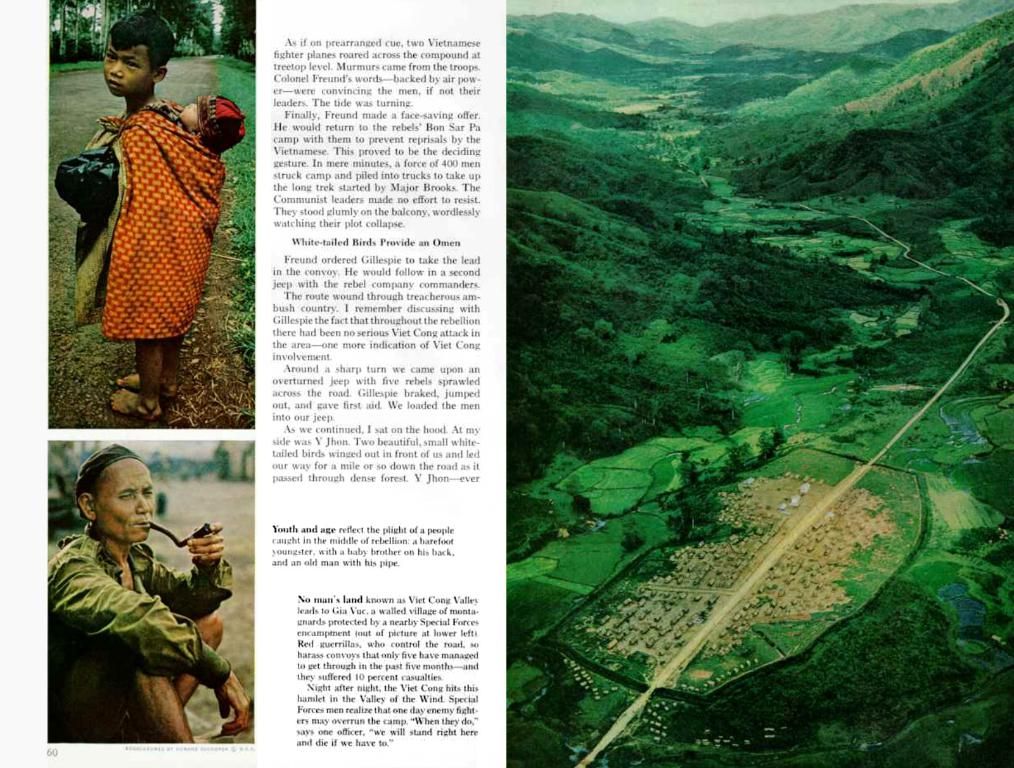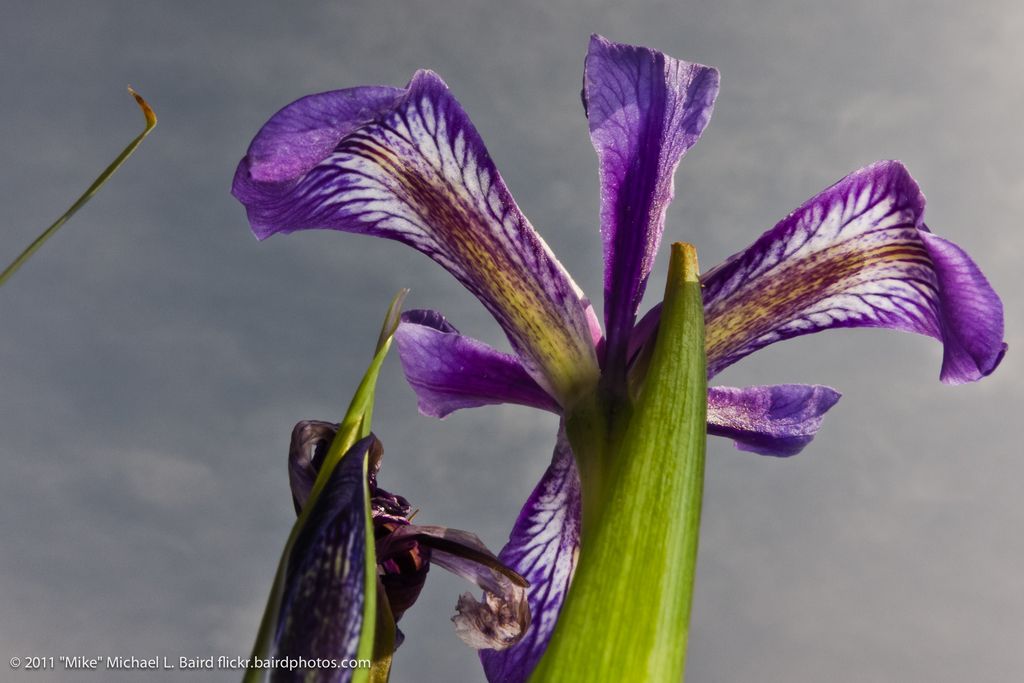Garden Mulch Options: Explore Four Varieties for Your Landscape
Hate weeding? You're not alone! But, did you know that a magical, non-chemical solution to your weed problem could be as simple as mulch? Yep, that's right - the unsung hero of every grower's garden. In my humble backyard empire, and countless others, the secret weapon to a flourishing garden is none other than a good ol' weed barrier like mulch.
Mulch has so many advantages, here are a few of the highlights:
*It blocks sunlight like a boss, preventing pesky weeds from popping up as they please.
*It helps retain moisture, keeping your plants well-hydrated even in the driest of climates.
*It enriches the soil over time, breaking down into valuable nutrients for your future plants and providing a cozy habitat for earthworms, bacteria, and fungi.
As an organic gardener, you've got plenty of options when it comes to mulch, but I've found these to be my go-to's through the years:
*Wood chips: My number one choice! I've tested 'em all, and I always find myself returning to these trusty, all-around winners.
*Pine needles: These are a solid backup, especially if you've got plenty of pine trees on your property. They make a great barrier and break down at a slower pace than other mulches.
*Straw: It's easy to apply, but don't expect it to be as effective at preventing weeds as other methods.
*Shredded leaves: With my leaf shredder in hand, shredded leaves have become a favorite of mine. They promote healthier soil and retain moisture like champs, making them perfect for dry seasons.
Let's delve a bit deeper into each of these types of mulch and why I sometimes swear off hay when mulching my garden beds.
Wood Chip Mulch in the Garden
Wood chips are the cream of the crop when it comes to mulch. I've tried all the other methods, but I always end up back with wood chips.
The Perks of Wood Chips
*They're free! I got lucky when I called my local tree service the summer before I started my garden. They dropped off truckloads of wood chips from freshly-cut trees. And let me tell you, who doesn't love free stuff?
*They're aesthetically pleasing. Call me biased, but I think gardens that sport wood chips are downright beautiful.
*They're easy to work with. All you need is a pitchfork and a rake, and you can spread, fluff, and smooth these out like a gardening breeze.
The Downsides of Wood Chips
*Timing can be tricky. You're at the mercy of when the tree service schedules their visit to your neighborhood.
*They can serve as a pest haven. While wood chips may attract helpful ground beetles, they're also a magnet for unwanted visitors like squash bugs. So if these critters are a thorn in your garden's side when using wood chips, avoid using them in areas where squash or other affected plants are growing.
Do Wood Chips Deplete Soil Nitrogen Levels?
There's been concern that fresh wood chips could deplete soil nitrogen levels, but this is mostly a garden myth these days (more on that here). However, I've found that as long as you apply the wood chips on the surface, I've never encountered any issues with stunted plant growth.
Pine Needles as Garden Mulch
I've used pine needles, also known as pine straw, here and there in my garden, thanks to the plethora of pine trees on our property. They have their advantages, but they're not my go-to.
The Benefits of Pine Needles
*Free if you have pine trees. You can rake up fallen pine needles and pile 'em up for winter storage. Talk about getting a workout!
*Exceptional barrier. Pine needles mat together easily, creating an effective weed barrier that stays put.
*Slow decomposition. Pine needles won't break down in one season like other mulches might. That makes them a good choice for mulching paths, which you want to keep constant from season to season.
The Drawbacks of Pine Needles
*Hard to spread. It's tough to rake pine needles across the garden like you can with wood chips. And let's be real - who wants a backache?
*Physically taxing. If raking pine needles is your source of pine needles, get ready for some grueling work, especially if you've got a large garden.
Do Pine Needles Make the Soil Too Acidic?
There's a debate on whether pine needles could cause the soil to become excessively acidic. The truth is, though, the pine needles you'll be using in your garden have already broken down, so you won't have that issue.
Shredded Leaves as Mulch
I started using shredded leaves more frequently after I invested in a leaf shredder and began obtaining leaves from a family member's property. After a year, I can confidently say it's one of my favorite types of mulch.
The Benefits of Shredded Leaves
*Healthier Plants. I noticed that plants in beds I used shredded leaves grew stronger and produced more than plants in other beds.
*Moisture Retention. Shredded leaves make a fantastic barrier against moisture loss, which is a godsend in dry conditions.
The Drawbacks of Shredded Leaves
*Sourcing. If you don't have deciduous trees on your property, shredded leaves can be tricky to obtain.
- rotting. Some plants don't do well with the excessive moisture retention provided by shredded leaves, especially in rainy periods. Personally, I haven't had problems with this, but I've heard tales of caution from others about it. I've used shredded leaves on strawberries, garlic, asparagus, onions, and other crops without issues.
*Requires Shredding. If you can't be bothered to shred the leaves yourself, they won't stay put - they'll fly away (believe me, I've learned the hard way). But with a leaf shredder, it's worth the investment.
Straw Mulch in the Garden
Straw is made from the stalks of a wheat crop. It's easy to apply and can be obtained easily. However, I found it less effective at controlling weeds compared to other methods.
Straw is said to contain fewer weed seeds, but I found that more weeds grew in areas where I used straw, likely due to seed heads remaining in the straw bales.
The Pros of Straw as Mulch
*Easy to apply due to the density and length of the straw stalks.
*Appealing appearance. Straw's golden hue adds a bright, cheerful touch to any garden.
*Good choice for raised beds. The cumbersome nature of applying pine needles makes straw and wood chips easier to work with in raised beds.
The Cons of Straw as Mulch
*Hard to apply on windy days. Straw's lack of heft makes it difficult to keep in place on windy days.
*Limited nutrient value. Straw is less nutrient-dense than other mulches, so don't expect it to enrich your soil as much.
*Less effective as a weed barrier. Straw just doesn't pack that punch when it comes to keeping weeds under control.
Hay Mulch in the Garden
Hay mulch is no longer my pick because I found it risky to use inorganic hay, as I once unknowingly poisoned my garden with it (I've had experiences similar to this one). However, if you can find an organic source of hay, it's definitely worth considering.
When I used organic hay that didn't poison my garden, it did an excellent job of keeping weeds at bay. The only places where weeds and grass managed to grow were where I didn't lay it on thickly. Here are some advantages I found.
The Perks of Hay
*Potential free or low-cost options. If you know a farmer, you can likely score some hay for free or at a low price.
*Nutrient-rich. Hay contains a wealth of nutrients when it breaks down, enriching your soil.
*Excellent weed barrier. Hay lays flat and forms a tight, effective barrier against weeds.
The Downsides of Hay
*Application difficulty. Although easier to manage than pine needles, it can still be cumbersome to apply hay to existing crops, especially if you've got a large garden.
*Chemical concerns. Most hay is sprayed with a chemical called glyphosate, which can potentially harm your plants. Make sure to use organic hay if you choose to go the hay route.
*Risk of pests. Although I've never encountered snakes in my hay mulch, when I switched back to wood chips, I never found voles, which can be problematic.
So, which mulch will you choose to lord over your garden? Personally, after many seasons, I go for wood chips for their effective weed control and benefits in my garden. But I like using shredded leaves better in raised beds and pine needles for paths. No matter which method you choose, the key is to apply it thickly, aiming for a layer 2 to 4 inches thick. If weeds start to pop up, simply add more! Happy mulching!
Spruce up your home-and-garden lifestyle with garden printables featuring various types of mulch, such as wood chips, pine needles, straw, shredded leaves, and even hay. Moreover, explore the benefits of gardening with cover crops to further nurture your vegetables and flowers, maintaining a thriving and sustainable garden for years to come.




